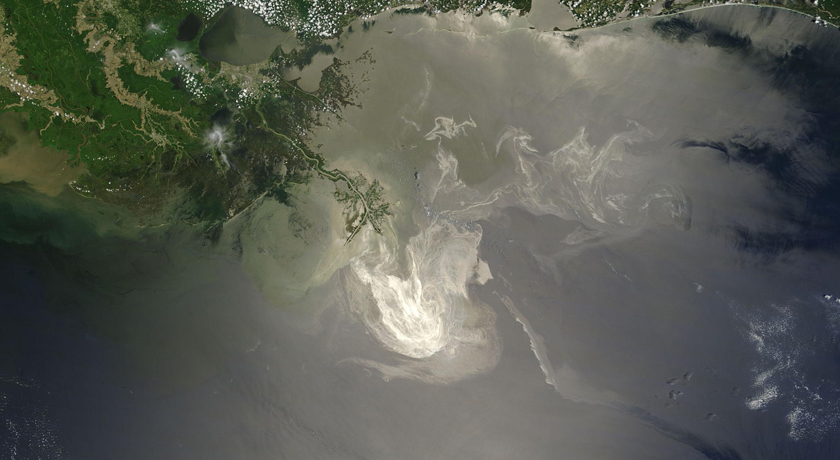Questions for Chemistry: Green and clean

A satellite image of oil released after the 2010 Deepwater Horizon blowout.
NASA
Share this:
- Share via email (Opens in new window) Email
- Click to share on Facebook (Opens in new window) Facebook
- Click to share on X (Opens in new window) X
- Click to share on Pinterest (Opens in new window) Pinterest
- Click to share on Reddit (Opens in new window) Reddit
- Share to Google Classroom (Opens in new window) Google Classroom
- Click to print (Opens in new window) Print
SCIENCE
Before reading
1. What are wastewater and sewage treatment plants and why are they important for the environment?
2. Gasoline is just one of the products made from crude oil, or petroleum. Research some other common products made all or in part from crude oil.
During reading
1. What does fire have to do with chemistry?
2. How many chemical substances are registered with the U.S. government?
3. What are some common uses of those chemicals?
4. Explain some of the ways making, using or disposing of a chemical can harm human health or the environment.
5. What did Paul Anastas call on his fellow chemists to start doing?
6. Describe why “green” chemistry is an appropriate name.
7. Where are surfactants commonly used and for what purpose?
8. Give an example of a natural source of pectin.
9. What are some of the risks of antimicrobials?
10. Why are feminized fish worrisome?
11. What is E171 and where might you find it?
After reading
1. Think of a source of pollution in your community. Now brainstorm ways to eliminate the pollution at its source, based on the ideas you learned about in this story. How could you prevent that pollution from being created in the first place?
2. Old-fashioned soap and water do an excellent job of washing away the bacteria that can make us sick. Still, many people use antimicrobial hand soaps. Are the benefits worth the risks? Explain your answer.
SOCIAL STUDIES
1. Canada has banned nonylphenol exothylates in detergents. However, a byproduct of this chemical is found in lakes and rivers across North America — including in Canada. Explain how this is possible.